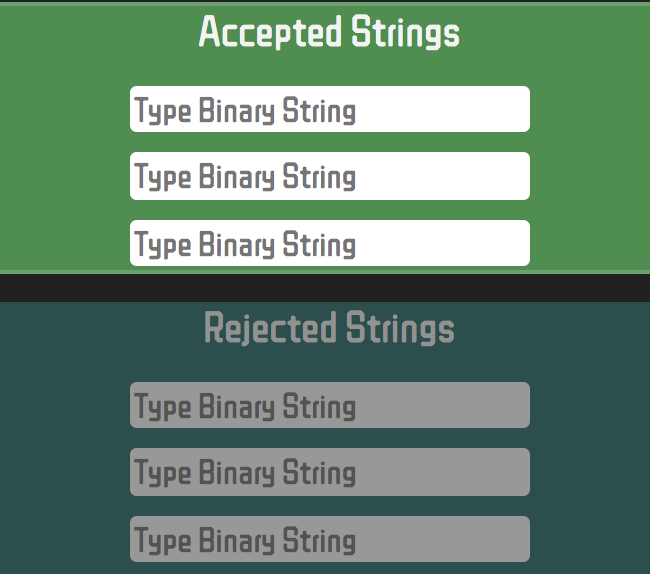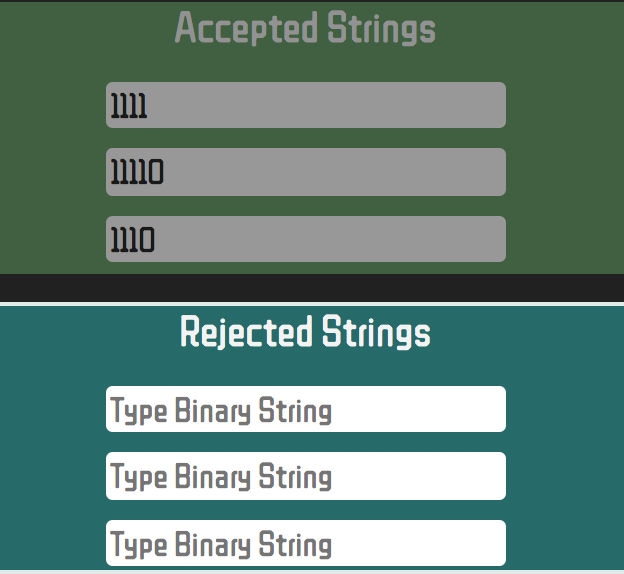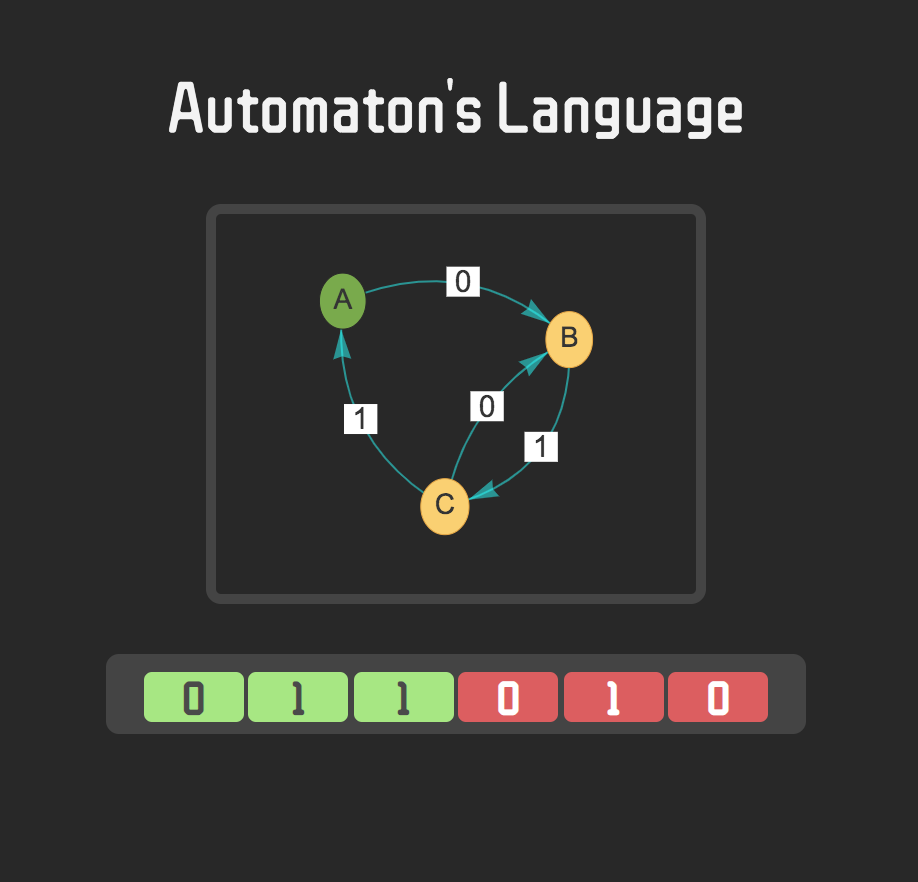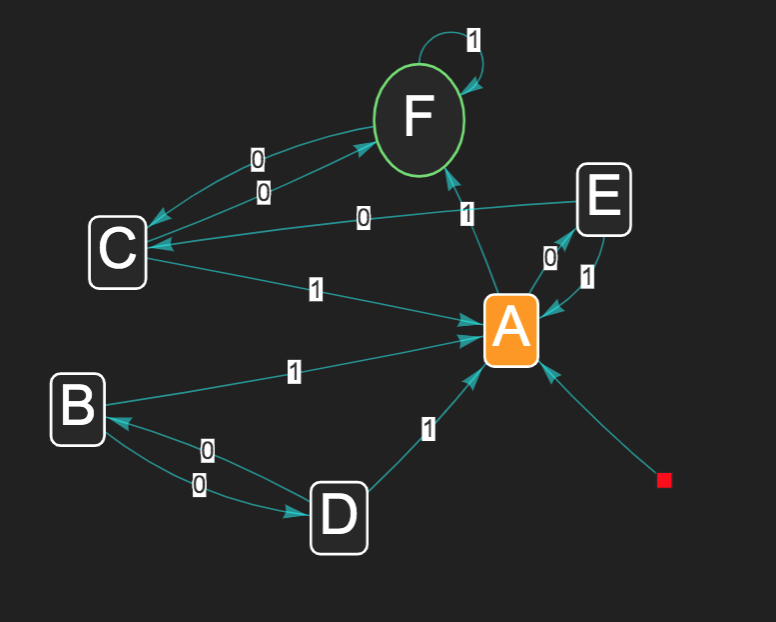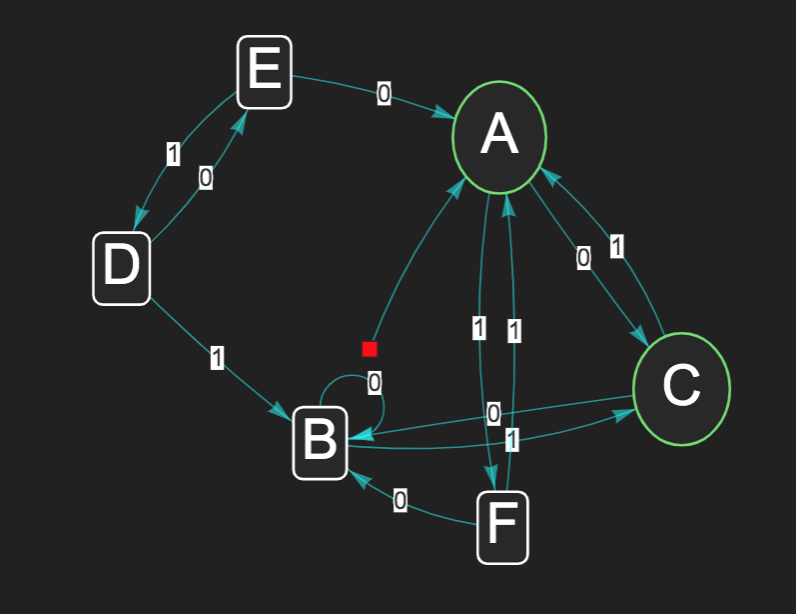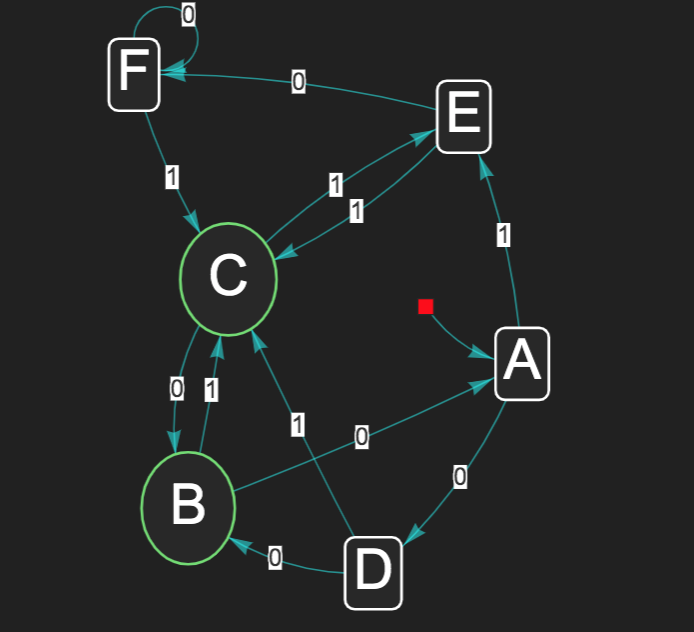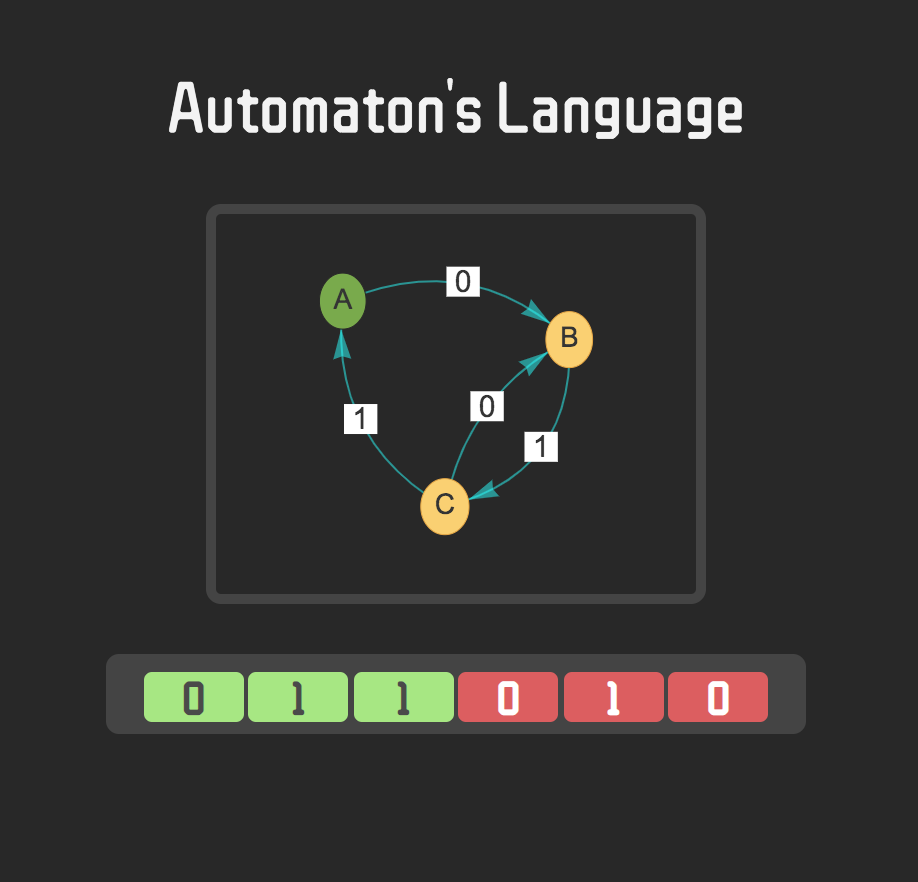
Name: Automaton’s Language
Tech: HTML5, CSS3, Javascript, jQuery, Vis.js
Platform: Desktop & Tablet Devices
Available Version: Try the Automaton’s Language simulation
Game Type
The “Automaton’s Language” interactive learning environment is a Puzzle, Point & Click game which attempts to abstract the complexity of finite-state machine and acts as a practice space.
This is a learning based game but should be integrated with additional resources previous to exploring it.
Description
Aa state machine, is a mathematical model of computation. It is an abstract machine that can be in exactly one of a finite number of states at any given time. Inputs determine whether a system should change its state. The change from one state to another is called a transition. A complete finite-state machine is defined by a list of its states, its initial state, and the inputs that trigger each transition. This interactive game explores one example of finite-state machine called Deterministic Finite Automaton and how to create a valid binary string language for it. It is a finite-state machine that accepts or rejects a given string of symbols, by running through a state sequence uniquely determined by the string. In this case, the unique symbols are represented by bits of random binary strings that players need to generate according to the given state-machine system. The interactive environment is mainly used as a practice space for students to understand and visualise the concept of finite-state machine. Students need to generate a valid state-machine language which accepts and rejects binary strings based on the given tasks.
Terminal Learning Objectives
This interactive learning environment has the following TLO:
- Create a visual mental model of finite-state machine
- Understand the basics of DFS (state, transitions)
- Understand how DFS can be applied to verify binary strings
- Understand how to create valid DFS languages
Game Design Values
- Experience: The “Automaton”s Language” interactive learning environment is a Puzzle, Point & Click game which allows the players to visualise and practice the theory of finite-state machine languages.
- Theme: Players are in control of generating valid binary string languages for a given machine-state system. Systems are represented by graphs with nodes as states and direct connection between nodes representing the transitions. A random set of graphs dictate the language that should be generated.
- Point of View: The game is presented as a 2D environment containing images, dynamic content, and UI buttons. The game graphics are minimal but essential.
- Challenge: The main challenge is to compete against the computer in correctly generating finite-state machine binary languages. The system is represented by clickable random graphs. Players have to correctly write a set of accepted and rejected binary strings according to the given state-machine graph. They can finally verify their computation against the computer solution.
- Decision-making: Decisions do not happen in real-time as players can take their time when making decisions.
- Skill, strategy, chance, and uncertainty: The game keeps track of players written languages and checks for correctness. Players need to combine their knowledge and correctly write binary strings. There are elements of uncertainty as random state-machine graphs are generated at each run.
- Context: The simulation is run as a web application. It has been used as part of interactive formative learning material on E-learning platforms like Coursera.
- Emotions: The “Automaton’s Language” is meant to generate a feeling of excitement, discovery, and visual understanding. Students can verify their knowledge by comparing their results with the computer computation of the system.
